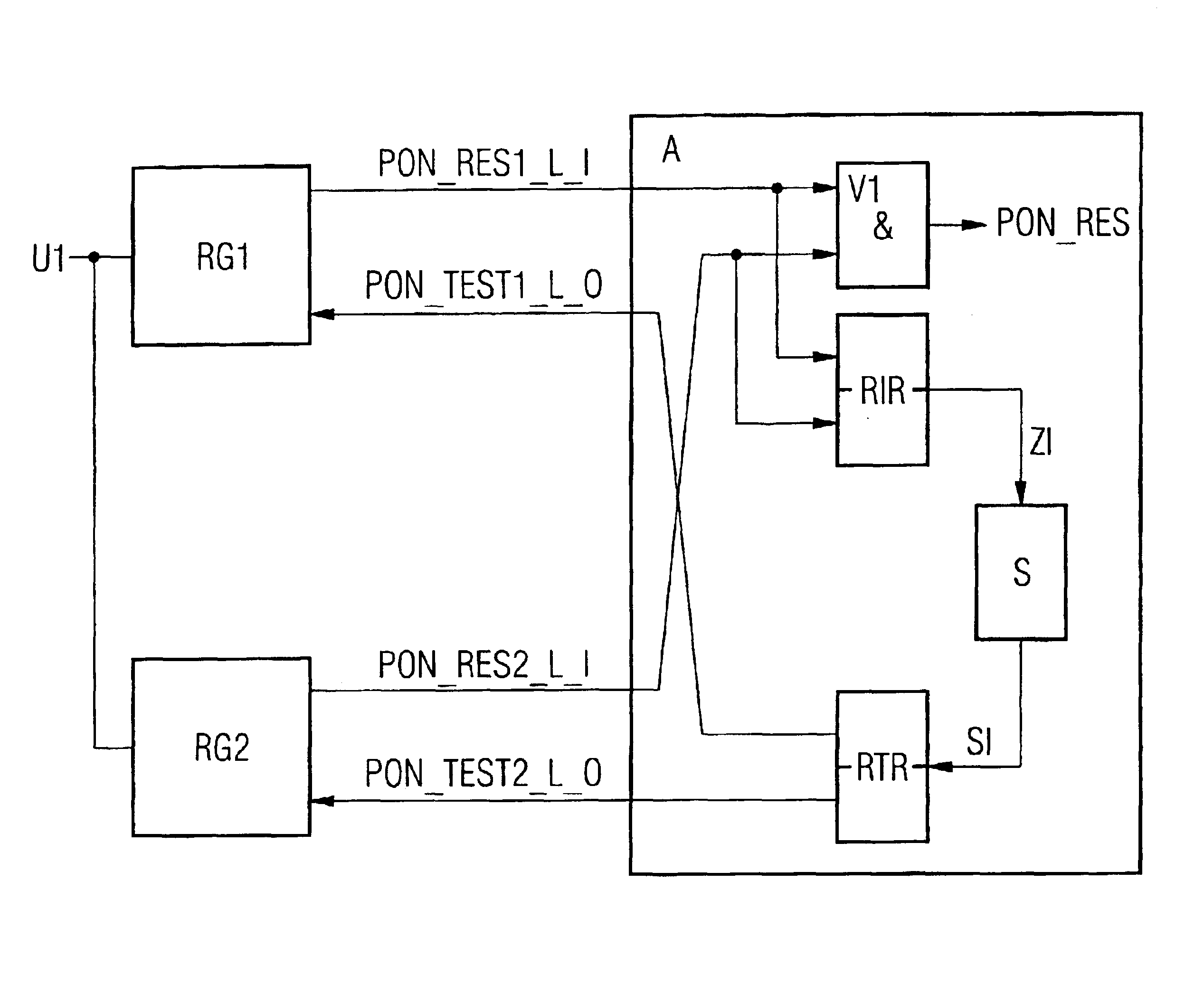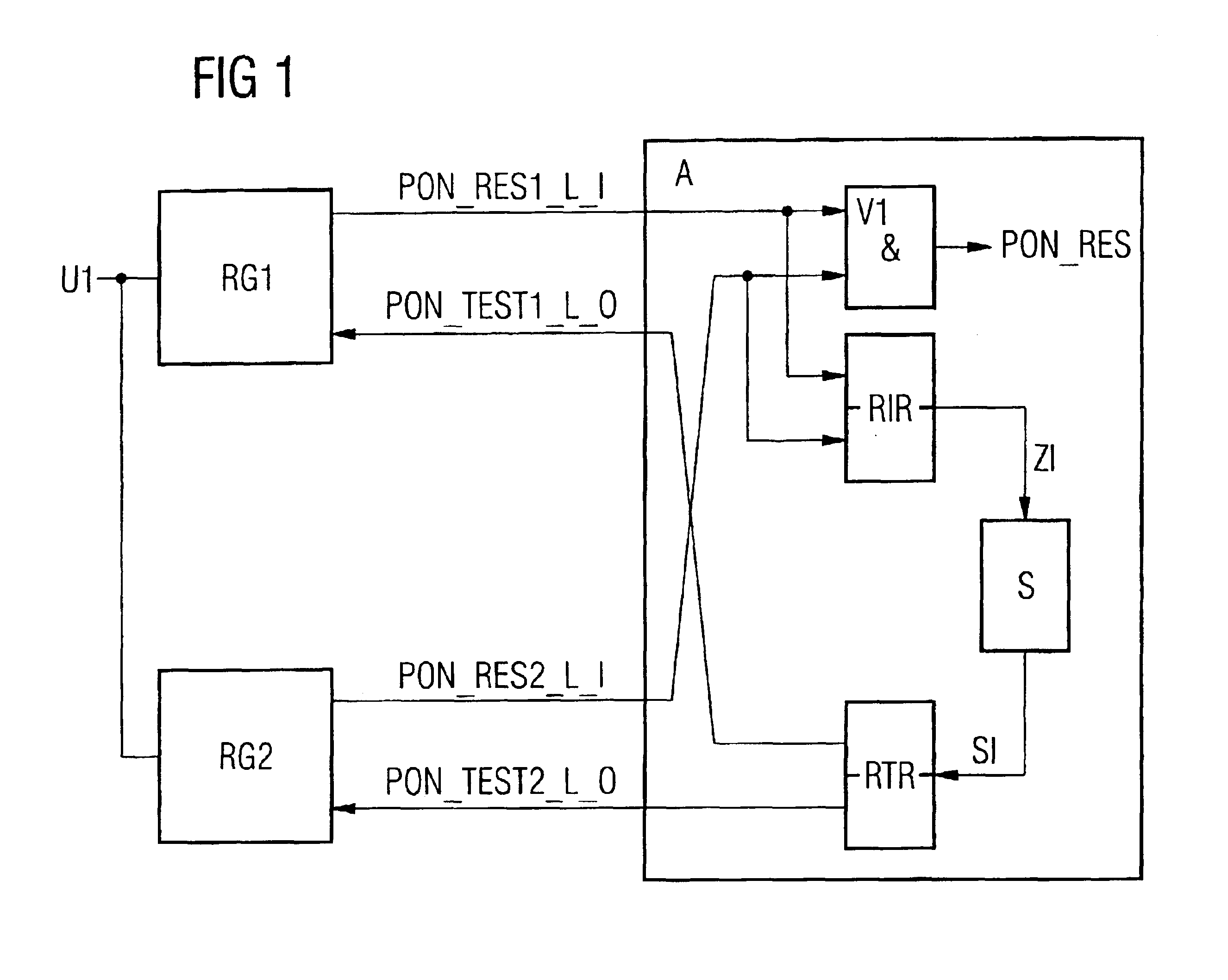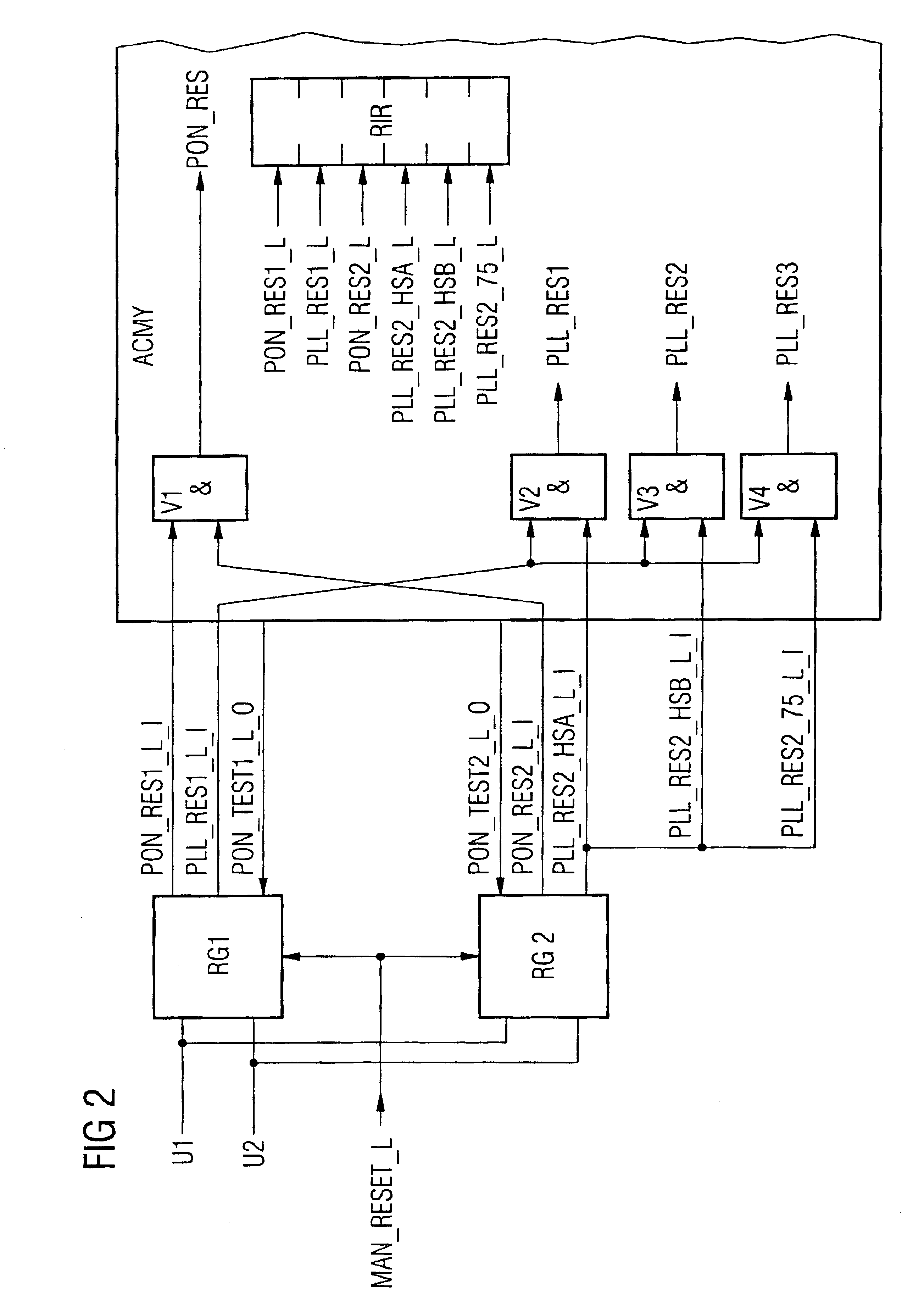Process and circuit arrangement to monitor physical parameters
a technology of physical parameters and circuits, applied in the direction of transmission monitoring, testing circuits, instruments, etc., can solve the problems of not being able to establish how long a static ram memory can maintain a data template, difficult for the processor to differentiate whether the assembly is made, and difficult to distinguish between the three cases
- Summary
- Abstract
- Description
- Claims
- Application Information
AI Technical Summary
Benefits of technology
Problems solved by technology
Method used
Image
Examples
Embodiment Construction
[0026]FIG. 1 shows an electrical voltage U1, which is monitored by a first Power-On Reset generator RG1 (called voltage monitoring module RG1 below) and a second Power-On Reset generator RG2 (called voltage monitoring module RG2 below). When the voltage U1 deviates from a prescribed setpoint range, for example a nominal value of 5 volts with an allowable deviation of ±5% of the nominal value, the first voltage monitoring module RG1 produces a Reset signal on a first Reset line PON_RES1_L_I (Power-On_Reset1_Low-active_Input) that is an output line of the first voltage monitoring module RG1, and the second voltage monitoring module RG2 produces a Reset signal on a second Reset line PON_RES2_L_I (Power-On Reset2_Low-active_Input) that is an output line of the second voltage monitoring module RG2.
[0027]The first voltage monitoring module RG1 has an input line PON_TEST1_L_O (Power-On_Test1_Low-active_Output), through which a first test signal can be input to the first voltage monitoring ...
PUM
 Login to View More
Login to View More Abstract
Description
Claims
Application Information
 Login to View More
Login to View More - R&D
- Intellectual Property
- Life Sciences
- Materials
- Tech Scout
- Unparalleled Data Quality
- Higher Quality Content
- 60% Fewer Hallucinations
Browse by: Latest US Patents, China's latest patents, Technical Efficacy Thesaurus, Application Domain, Technology Topic, Popular Technical Reports.
© 2025 PatSnap. All rights reserved.Legal|Privacy policy|Modern Slavery Act Transparency Statement|Sitemap|About US| Contact US: help@patsnap.com



